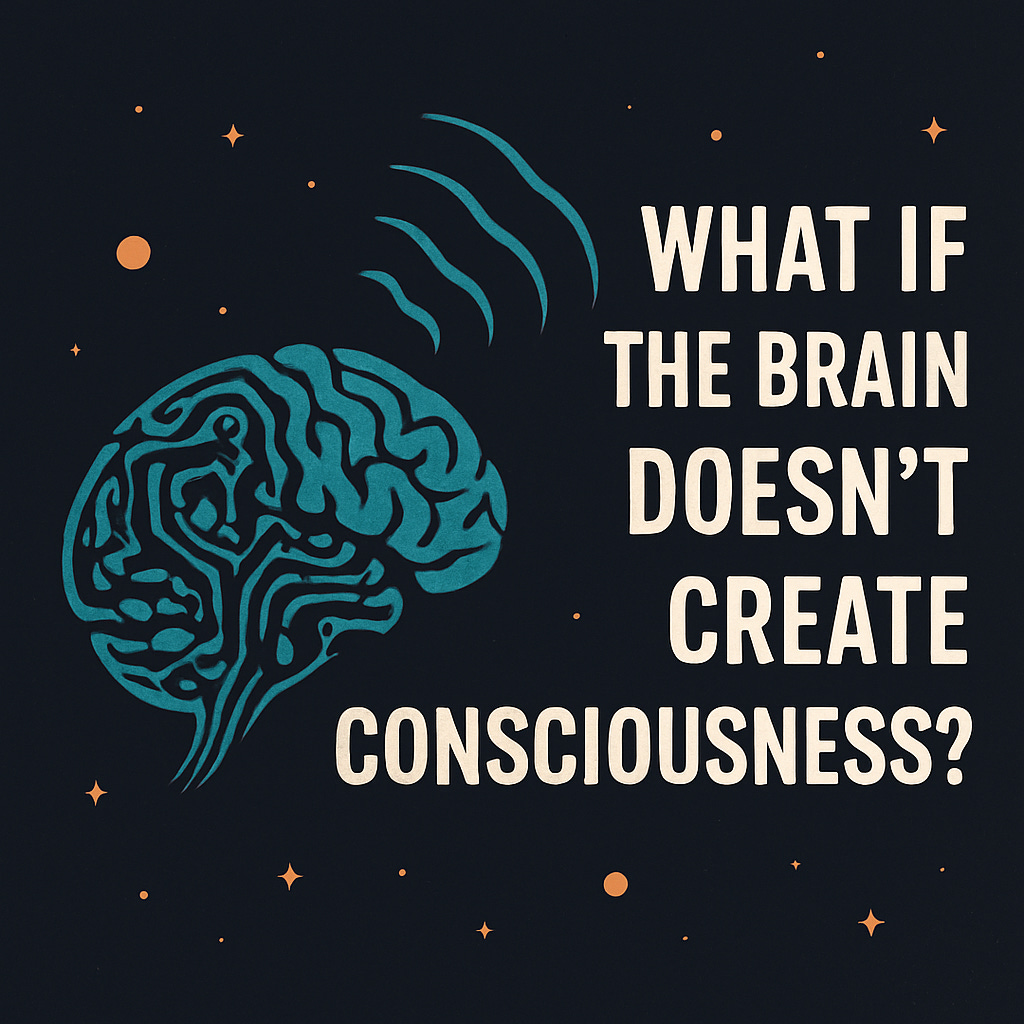What If the Brain Doesn’t Create Consciousness?
The Generator vs. Receiver Debate, and the Birth of a Different Model
Let’s start with the most annoying, unsolved riddle in modern science: how does your brain produce consciousness? How does a pinkish-gray, three-pound slab of biological goop give rise to thoughts, dreams, emotions, memories, awareness, and that inner sense of you reading this sentence right now?
This is what philosopher David Chalmers famously called the hard problem of consciousness, and despite all the progress in neuroscience, psychology, and cognitive science, the truth is, we’re no closer to solving it than we were 30 years ago. We know what parts of the brain light up during certain experiences. We know how damage to one area can impair memory, vision, language, or motor skills. But how brain cells firing electrical signals somehow becomes the experience of love, rage, music, or the taste of strawberries? That’s still a black box.
And here’s a thought that most scientists politely avoid: what if the brain doesn’t produce consciousness?
What if it receives it?
The Generator vs. Receiver Metaphor
The dominant view in neuroscience is that the brain is a generator of consciousness. Like a computer running code, the mind is simply the output of a complex network of neurons, shaped by evolution and experience. If we can map the code well enough, if we simulate it perfectly, we can recreate or explain consciousness.
But this view runs into a wall. No matter how detailed the scan or simulation, we still hit the same roadblock: why is there something it is like to be conscious? Why is there an internal experience at all? This gap, between physical activity and subjective experience, is where many theories stall out.
The receiver hypothesis flips the model.
Think of your brain less like a generator and more like a radio or television. It doesn’t create the signal, it receives, modulates, and decodes it. In this metaphor, consciousness exists outside the brain. The brain tunes into it. And just as different devices can tune to different frequencies, different brains (and different organisms) may receive, shape, and express consciousness in different ways.
This isn’t a new idea. Versions of it have popped up across history, from Eastern spiritual traditions to 20th-century thinkers like Aldous Huxley, who once suggested the brain might function as a “reducing valve1” narrowing the flow of a much larger, more expansive consciousness into something survivable for human use. William James2 hinted at it. Carl Jung3 danced around it. Even Tesla4 and Schrodinger5 flirted with similar metaphors.
But most of these were philosophical musings, not testable theories.
What we’re building here is something a little different.
Enter the BioCircuit Consciousness Theory
The BioCircuit Consciousness Theory (BCCT) begins with the premise that consciousness is not a product of biology, but a signal, a fundamental field that permeates the universe. Life, in all its forms, didn’t invent awareness. It evolved the tools to tune into it.
Think of every living thing as part of a vast, planetary-scale circuit board. Each organism is a receiver. The complexity and architecture of the brain determine how that consciousness is experienced. But even simpler organisms like trees, fungi, jellyfish are still part of the circuit. They may be tuning in at lower frequencies, or expressing the signal in ways we don’t yet understand.
In this view, the brain is more like a router than a generator. It shapes the signal but doesn’t create it. And when the router is damaged, say, by a head injury or degenerative disease, the signal becomes distorted or lost, just like a garbled radio station. But the signal itself never disappears. It’s still out there.
This model can help us understand some of the strange phenomena that the generator theory struggles with:
Near-death experiences that occur when brain function is minimal or absent.
Split-brain cases where one body can appear to host two distinct consciousnesses.
Psychedelic states that suggest an expanded or shifted consciousness beyond baseline awareness.
Collective behavior in social animals, fungi networks, or even insect colonies.
Panpsychism, the idea that some form of consciousness is present in all matter.
These aren’t proof of the BioCircuit theory, but they start to make more sense when we drop the assumption that awareness only emerges at the highest rungs of neural complexity.
Why This Matters
This is more than just a thought experiment.
If the BioCircuit model is even partly correct, it challenges some core assumptions of modern science, medicine, and AI.
It suggests that human consciousness is not unique, but one form of a much broader field.
It may open new pathways for understanding consciousness without reverse-engineering the brain.
It casts doubt on the idea that simulating a brain will ever produce true awareness.
And it could radically change how we think about life, death, ethics, and the role of consciousness in the universe.
You don’t have to buy the whole model. But if you’ve ever had a moment where it felt like awareness was something more than neurons firing—this might resonate.
That’s the journey we’re starting here.
A signal. A circuit. A theory.
Welcome to the BioCircuit Consciousness Theory.
More to come.
A Note to My Religious Friends
Before jumping into the comments, I want to make a small request. This theory isn’t meant to dismiss or replace spiritual or religious belief, in fact, it might complement it. I’m not claiming to know the origin of the “signal” or the nature of the universe. I’m just exploring the idea that consciousness might be something received, rather than created, and that life, in all its forms, could be part of something bigger than we’ve imagined. If you come from a faith tradition, I hope you’ll read this with curiosity and not conflict. You’re very welcome here.
Aldous Huxley, The Doors of Perception (1954)
William James, Human Immortality (1898)
Carl Jung, The Archetypes and the Collective Unconscious (1959)
Nikola Tesla, My Inventions (1919)
Erwin Schrödinger, Mind and Matter (1958)


